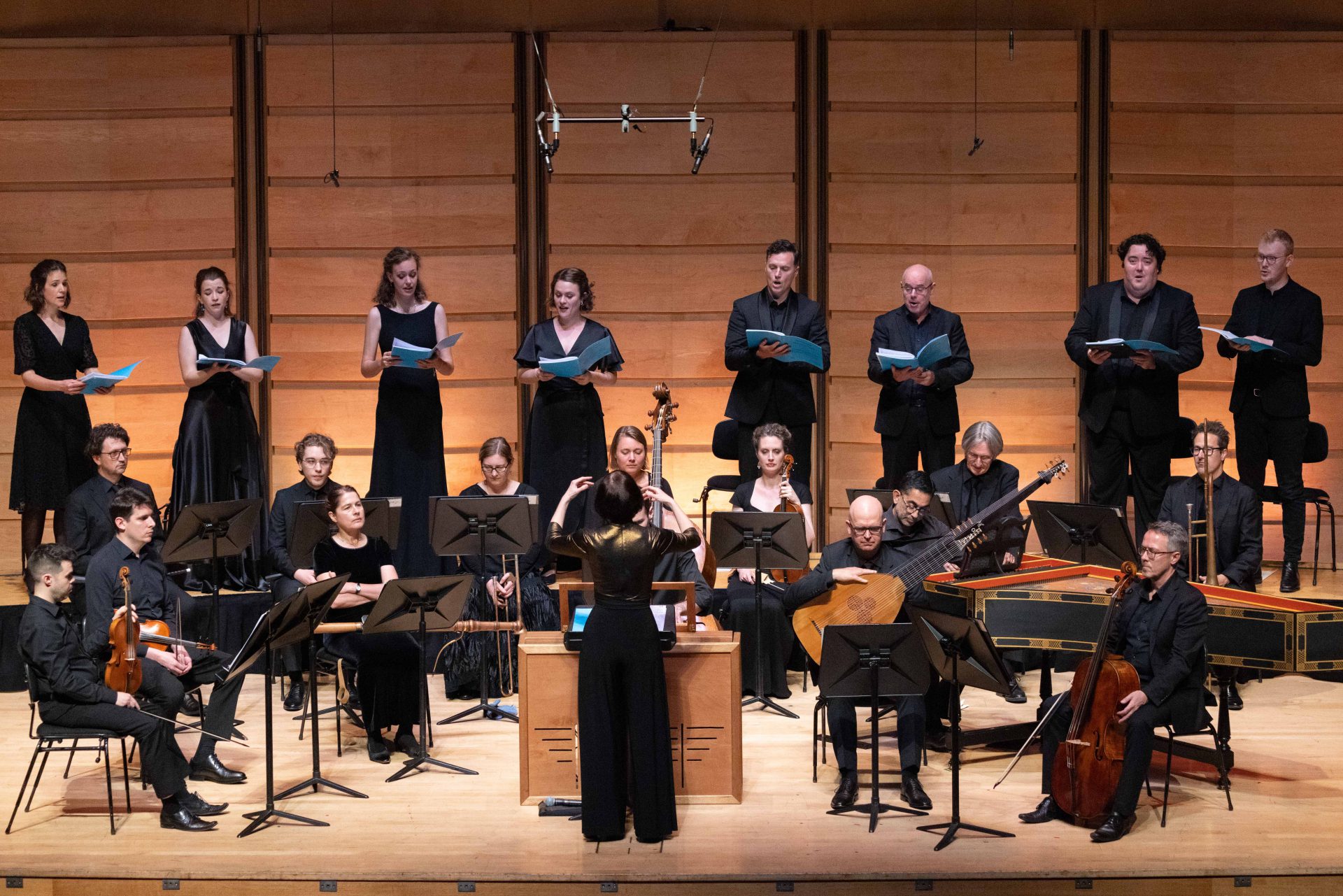With another Easter season there comes another Bach Akademie Australia concert. The selection this time was Easter cantata ‘Erfreut euch, ihr Herzen’ (BWV 66), the motet ‘Komm, Jesu, Komm’ (BWV 229) and the Missa Brevis in F major (BWV 233). The occasion is made even more auspicious by the fact that this year marks 300 years since Bach’s appointment as Cantor at the Thomaskirche in Leipzig.
The first cantata begins with a distinctive wash of strings, which quickly rushes upwards as though dispelling fear with the flick of a wrist, and with something of a dialogue between oboes and trumpet. Though the female voices seemed diffident at first, the male voices responded vigorously. That was dispelled immediately with a very deftly punctuated series of ‘Herrschet’, as well as a delightful extended trill by the sopranos. There was a slight decelerando for what might be called the ‘B part’, which was a brooding fugue (a bit like the chromatic fugue in the second part of BWV 63, which was performed last year). However, the contrast could have been made greater, to reflect a change in the mood of the text – from hope to fear – that pervades the rest of this cantata.
Jack Stephens emerges as bass voice for the first recitative, which melds seamlessly into an aria. The aria features a rather pastoral instrumental opening with large strides like in the sinfonia to Himmelskonig, sei Wilkommen. There were some slips in timing, with Stephens singing too quickly, and at times the orchestra seemed to play at a rushed tempo (for example, the ritardando at ‘Barherzigkeit neu’ seemed too truncated, and the music was not allowed to ‘breathe’ in full). But Stephens’ voice and control was at all times remarkably clear, and the elongated ‘ewige’s (one of Bach’s favourite word-playing tricks) were spectacular.
Richard Butler then emerged for a tenor recitative. Butler’s animated voice, tailor-made for Baroque recitatives, was on full display here. The most wonderful part is when the recitative melds into a delightful discourse between Butler as tenor and Stephanie Dillon as alto. A brief but vibrant introduction by Anthea Cottee on the cello makes its way for Butler who, representing ‘Hope’ sings ‘My eyes see the saviour arisen’, and then for Dillon who, representing ‘Fear’, sings, in canonic imitation, ‘No eye sees the saviour arisen’. On ‘besieget’, Dillon performs a glimmering glissando.
The next aria is almost a continuation of the first, and opens with a vibrant theme on violin which Madeleine Easton performed lyrically throughout. There is something of a thematic inversion in the piece, with the long notes pronounced by the anxious alto being replaced by the tenor, as Fear and Hope begin to merge. From the initial tension between these two dramatis personae thereemerges a jubilant resolution to this dialectic – a resort to comfort, illustrated by a series of cascading violin notes.
This is clearly a more discursive cantata, harking back to the Akademie’s earlier theme on ‘Bach and Rhetoric’. The recitative flows immediately into the arias and there is something of a dramatic discourse between two moral archetypes, which gives the impression of a morality play or of the ancient Greek dramas that inspired Monteverdian opera and the grand prologues thereof.
The Akademie is to be commended for its consistently outstanding concert programs. There is no sign of cost-cutting; instead, the audience is treated to detailed information on the history of each piece, as well as the German text to each piece alongside its English translation.
Next was Bach’s meditative motet ‘Komm, Jesu, Komm’. At first impression, it seemed each ‘Komm’ needed to be more distinctive. In his cantatas, Bach often focused very heavily on the word ‘Komm’, central as it is to the notion of salvation through the Second Coming, and parallels can be seen in the second symmetrical ‘half’ of the Actus Tragicus. The heavily-contrapuntal passages for ‘Der saure weg’ were performed very well. But the performance sometimes overlooked the importance of the pause, to hang on particular words and to relieve the piece of its heavy busyness. Susannah Lawergren did well with the high notes.
After an interval came the Missa Brevis in F (BWV 233). The Kyrie featured lively continuo realisations by Neal Peres da Costa on harpsichord. Easton’s conducting was to brilliant effect in the Gloria. With its various vocal melismas clashing into one another against a rich instrumental backdrop, it is a difficult piece upon which to impose clarity and order. Michael Dixon and Jenny McCleod-Sneyd on corni cut through all this nicely.
Andrew Fysh’s full and rich bass voice was a good match for the Domine Deus aria. In a show of fidelity to the score, which curiously leaves no gaps, Easton brings in the Qui tollis in quick succession. Like all of Bach’s Qui tollis arias, it is sublime and heart-rending, and centres upon selective but gutting dissonances. Kailen Cresp did remarkably well on oboe here, and the anguish was conveyed in a palpable way throughout. Lawergen’s voice became more affected and animated, to effectively depict the text’s desperation, as the aria progressed.
The Quoniam featured another ‘violono solo’ by Easton, which she despatched with characteristic ease and skill, facing the audience. The aria is surprisingly Vivaldiesque in its design. It features a long, winding and persisting solo violin motif that makes itself known throughout the voice’s meanderings; and such is its prominence that the audience is left to wonder: was it the violin imitating the alto voice, or the voice imitating the strings?
